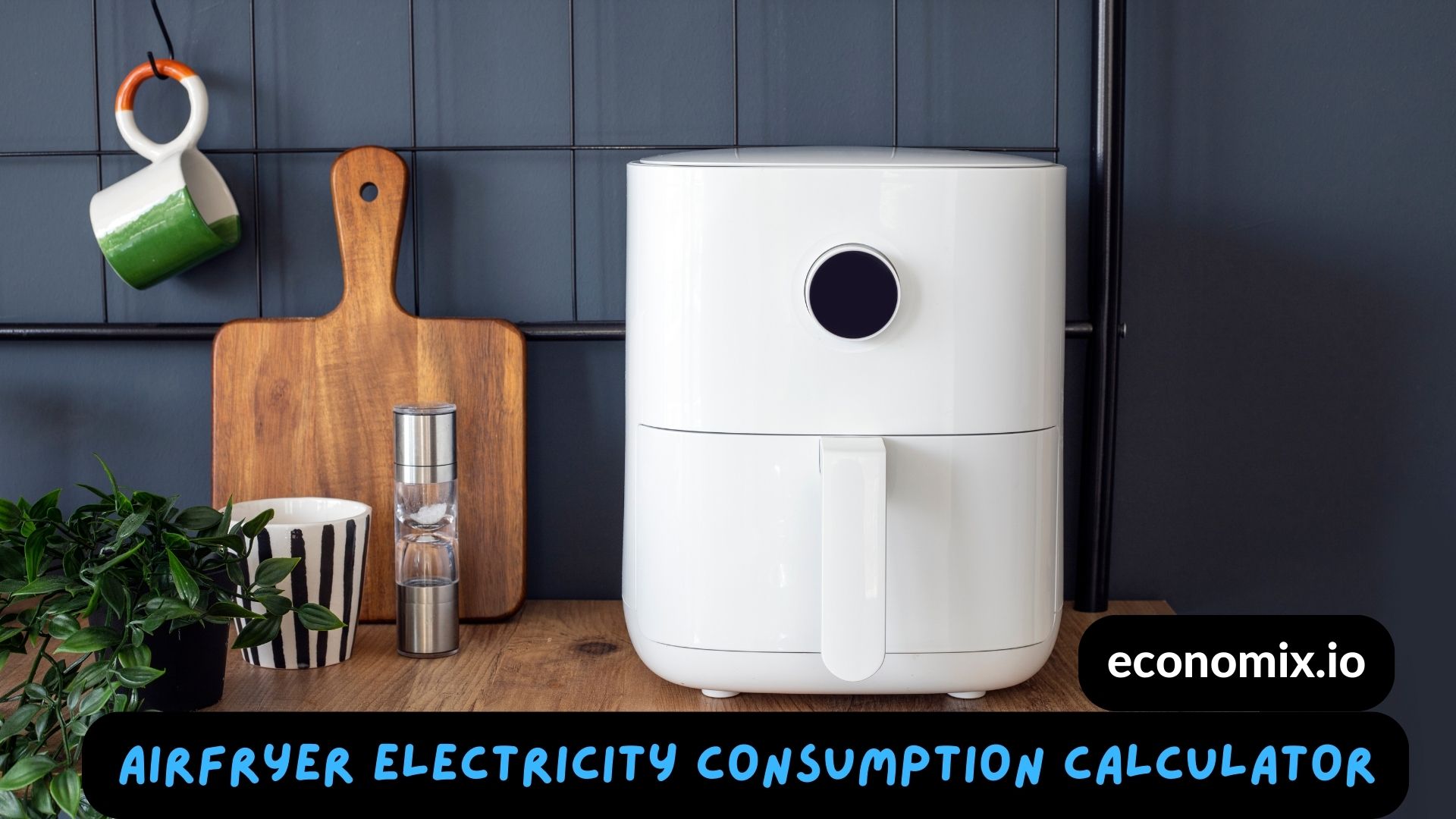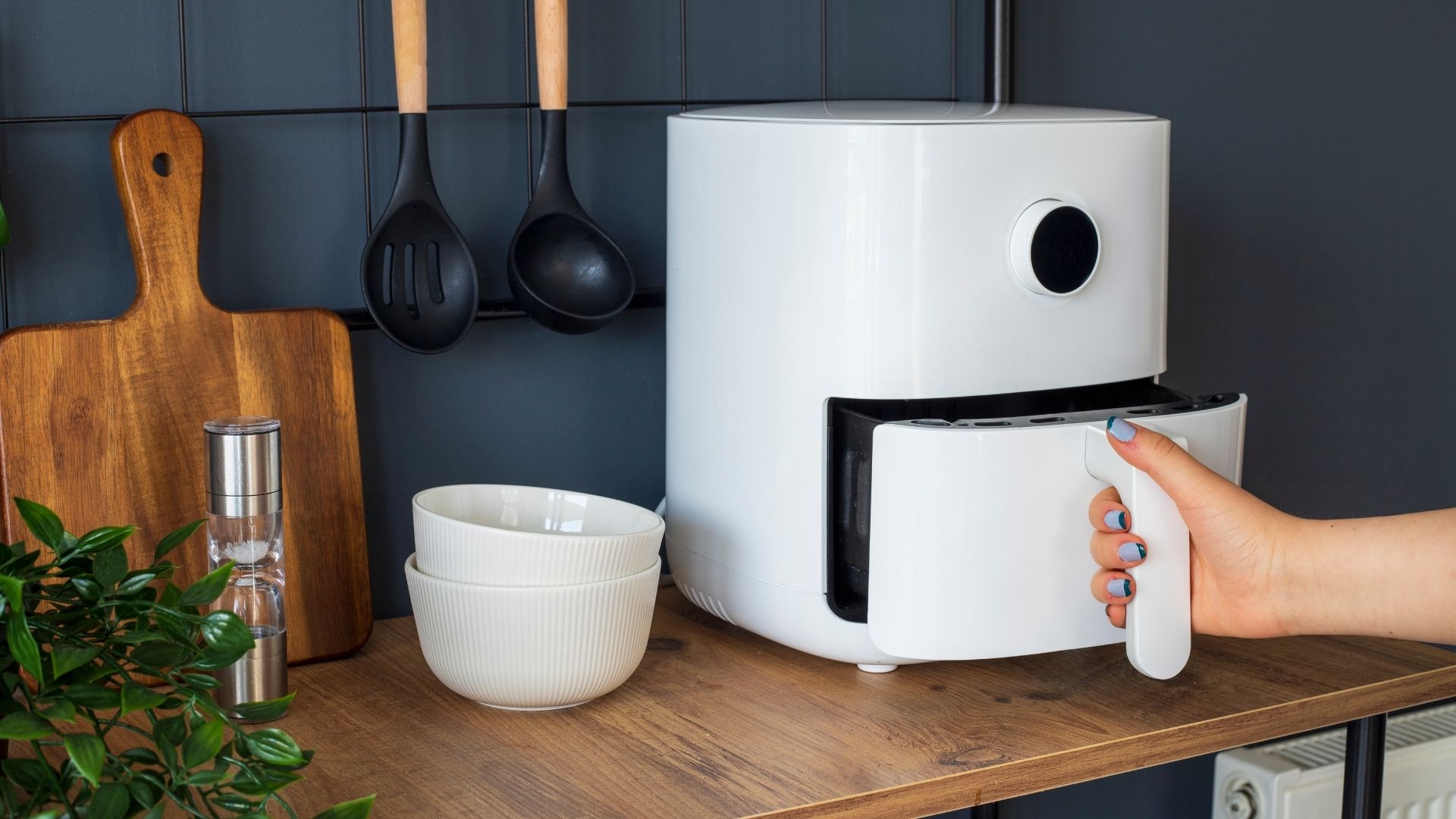Table of Contents
- Is Your Air Fryer Consuming Too Much Energy?
- Does an Air Fryer Use a Lot of Electricity?
- Why Use the Airfryer Electricity Consumption Calculator?
- Is It Cheaper to Run an Air Fryer Than an Oven?
- How to Calculate the Cost of Using Your Air Fryer
- Why Are People Choosing Air Fryers Over Other Appliances?
- What Appliances in the Home Use the Most Electricity?
- Why Some People Are Moving Away from Air Fryers
- How Much Electricity Does a 1,500-Watt Air Fryer Use?
- Take Control of Your Home’s Energy Use
- Smart Choices for a Smarter Home
Estimated reading time: 6 minutes. Last updated: December 28, 2024.
Is Your Air Fryer Consuming Too Much Energy?
Air fryers have quickly become a favorite kitchen appliance for their ability to cook crispy, delicious meals with minimal oil. But while they save on calories, how do they impact your electricity bill? Are air fryers as energy-efficient as they seem, or are they quietly adding to your household energy consumption?

This is where the Airfryer Electricity Consumption Calculator comes in handy. This tool helps you understand exactly how much electricity your air fryer uses based on its power rating, average cooking time, and how often you use it each week. With this insight, you can make informed decisions about your cooking habits and energy consumption.
“A small leak will sink a great ship.”
Does an Air Fryer Use a Lot of Electricity?
Air fryers are generally more energy-efficient than traditional ovens, but their electricity usage depends on a few factors, such as their power rating (measured in watts), the cooking duration, and the frequency of use.
For example, a 1,500-watt air fryer used for 25 minutes will consume approximately 0.625 kWh (kilowatt-hours) of electricity. While this may seem small, using your air fryer multiple times a day can quickly add up.
Wondering “How much does it cost to run an air fryer for 25 minutes?” If your electricity rate is $0.15 per kWh, that 25-minute session would cost you about $0.094—or less than 10 cents. Compare this to a traditional oven, which might consume 2-3 times more electricity for the same cooking task.
Why Use the Airfryer Electricity Consumption Calculator?
Understanding the exact energy usage of your air fryer is the first step toward managing your electricity costs effectively. This calculator is simple to use and provides valuable insights into your energy consumption. Here’s how it works:
- Input the Power Rating: Most air fryers have a wattage ranging between 1,200 and 2,000 watts.
- Enter Average Usage Time: How long do you typically use your air fryer per session? This could be anywhere from 10 to 40 minutes.
- Frequency of Use: How many times a week do you use your air fryer?
Once you provide these details, the calculator generates your energy consumption for various periods—weekly, monthly, semi-annually, and annually. This breakdown helps you see the bigger picture of how your air fryer contributes to your household energy use.
Is It Cheaper to Run an Air Fryer Than an Oven?
One of the biggest advantages of air fryers is their ability to cook food quickly, which often makes them more energy-efficient than ovens. Let’s compare:
- Air Fryer: A typical 1,500-watt air fryer might cook a meal in 25 minutes, using about 0.625 kWh of energy.
- Oven: A standard oven consumes around 2,000–5,000 watts and often takes longer to cook the same meal, using approximately 1–2 kWh of energy per hour.
From these numbers, it’s clear that air fryers use less electricity for quick cooking tasks, making them a cost-effective alternative for small to medium-sized meals. However, for larger batches, ovens may be more practical despite their higher energy consumption.

How to Calculate the Cost of Using Your Air Fryer
You only need three key pieces of information to figure out the cost of running your air fryer:
- Power Rating (kW): Look at your air fryer’s wattage and divide it by 1,000 to convert it to kilowatts (kW). For example, 1,500 watts = 1.5 kW.
- Usage Time (hours): Convert the minutes you use the air fryer into hours by dividing the minutes by 60. For example, 25 minutes = 0.42 hours.
- Electricity Rate ($/kWh): Check your electricity bill to find the cost per kilowatt-hour. For example, $0.15 per kWh.
Example Calculation:
- If you use a 1,500-watt (1.5 kW) air fryer for 25 minutes:
Power Rating: 1.5 kWUsage Time: 0.42 hoursElectricity Rate: $0.15 per kWhCalculation:
1.5 x 0.42 x 0.15 = $0.094
So, it costs about 9.4 cents (or less than $0.10) per session.
Monthly Cost: If you use your air fryer daily for 25 minutes, your monthly cost would be:
$0.094 x 30 days = $2.80
This shows that even with regular use, the cost of running your air fryer is very low. 😊
Why Are People Choosing Air Fryers Over Other Appliances?
Air fryers have gained popularity not just for their convenience but also for their perceived energy efficiency. However, some consumers worry about their contribution to electricity bills, asking questions like: “Does an air fryer cause high electric bills?”
The answer depends largely on how often and for how long you use your fryer. While they are energy efficient for small, quick meals, frequent use or longer cooking times can lead to noticeable energy consumption over time.
Still, air fryers are often cheaper to run than traditional appliances such as ovens or stoves. Compared to a microwave, however, the difference may not be as great. A microwave typically uses between 600 and 1,200 watts, making it slightly more energy efficient than an air fryer for short tasks such as reheating food.
What Appliances in the Home Use the Most Electricity?
Air fryers are relatively low on the list of energy-hungry appliances. Here’s a quick look at some of the biggest electricity consumers in a typical household:
- Heating and Cooling Systems: Central heating and air conditioning use the most energy, often accounting for 40–50% of household electricity.
- Water Heaters: Heating water consumes significant energy, especially if you have an older, less efficient model.
- Large Appliances: Washing machines, dryers, and refrigerators are also major contributors.
Compared to these heavyweights, air fryers are minor players. Nonetheless, every bit of energy saved counts toward reducing your carbon footprint and utility bills.

Why Some People Are Moving Away from Air Fryers
While air fryers are popular for their convenience, some people find that they don't meet all their cooking needs. For example, families with larger households may find it difficult to prepare enough food in one batch. Others may feel that their traditional appliances, such as ovens or microwaves, are sufficient for their needs.
But for quick meals, reheating leftovers, or trying out healthier recipes, air fryers remain an excellent option.
How Much Electricity Does a 1,500-Watt Air Fryer Use?
Let’s break this down further. If you use a 1,500-watt air fryer:
- For 25 minutes: 0.625 kWh
- Daily for a month: 18.75 kWh (assuming daily use)
- Annually: 225 kWh
At an average rate of $0.15 per kWh, this amounts to around $33.75 per year—affordable for most households.
“Waste not, want not.”
Take Control of Your Home’s Energy Use
Did you know that understanding how much power each of your appliances uses can lead to significant savings? Your deep fryer is just one piece of the puzzle. By tracking the energy use of other household appliances, you can uncover hidden opportunities to reduce your energy bill and create a more sustainable home.
If you're curious about the power consumption of other appliances, we've got you covered! Our website has a range of tools to help you make smarter energy choices. Check out these calculators:
- Dishwasher Electricity Consumption Calculator : Find out how much energy your dishwasher uses and discover ways to optimize it.
- Washing Machine Electricity Consumption Calculator : Learn how small changes in laundry habits can result in big savings.
- Oven Electricity Consumption Calculator : Get insights into your oven's energy use and explore cost-effective cooking tips.
Each of these tools complements the Airfryer Electricity Consumption Calculator by providing you with a comprehensive view of your home’s energy consumption. Remember, “small changes add up.” The more appliances you evaluate, the better equipped you’ll be to reduce waste and save money.
Smart Choices for a Smarter Home
The Airfryer power calculator is more than just a tool—it is a gateway to smarter, more sustainable living. As energy prices continue to rise, taking the time to monitor and adjust your habits can make a big difference to your monthly costs.
Imagine: by making small adjustments to how often and for how long you use your fryer, you could save enough to cover other household costs or simply enjoy more financial freedom. And it's not just about the money—you'll also be making a greener choice by reducing your energy footprint.
By using this calculator and others on our site, you'll be armed with the knowledge to make effective choices.
“People often undervalue what they don’t measure.”
Once you start tracking the energy consumption of your appliances, you'll be amazed at how easy it is to take control of your home's energy use.
Take the first step today. Use the tools available, make smarter choices, and start enjoying the benefits of a more efficient home. The power to save is in your hands—literally!
- Energy Efficiency and You https://www.regulations.doe.gov/eecompass/energy-efficiency
- Environmental Protection Agency (EPA) - Household Energy and Clean Air https://www.epa.gov/indoor-air-quality-iaq/household-energy-and-clean-air
- How Much an Air Fryer Consumes https://www.ariete.net/en/air-fryer/how-much-consumes